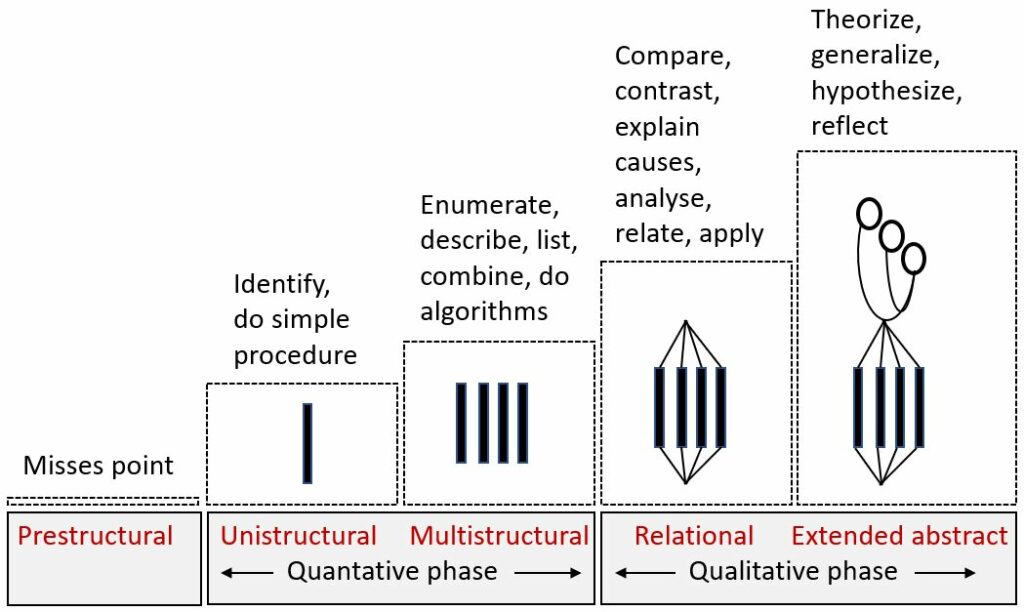The SOLO taxonomy for writing learning objectives with systematized, active verbs that describe a progression of knowledge, skills and abilities.
Knowledge taxonomies are systems for being able to describe knowledge, skills and abilities, from simple to complex and composed. They are very helpful when you e. g. formulates learning objectives in the syllabus. There are several taxonomies for this purpose.
The SOLO taxonomy by Biggs and Collis (1982) is an alternative to Bloom’s taxonomy (which is probably the most widespread). SOLO stands for Structure of the Observed Learning Outcome. A good description of the SOLO taxonomy, with many good examples of how it can be used in practice, can be found in Biggs and Tang (2011).
The SOLO taxonomy is structured as a hierarchy of verbs that can be used in the description of Intended Learning Outcomes (ILO). The ILO roughly corresponds to the learning objectives in the syllabus. You can read more about the ILO in Constructive Alignment in practice.
The hierarchy in the SOLO taxonomy is divided into five levels. The lowest level is Prestructural, i. e. the level where the student understands and can use the individual words, but where these carry very little substance.
The next two levels focus on quantitative aspects. The Unistructural level refers to when the student can make simple reasoning, but only manages to handle one aspect at a time and in a superficial way. The Multistructural level is about being able to present detailed facts, but where there is a lack of the ability to structure them in reasoning. At this level, the student can repeat facts and solve simple tasks with predictable solutions, rather than using facts to find their own solutions.
The two top levels instead focus on qualitative aspects. In the Relational level, the student can also use facts in structured reasoning and draw their own conclusions. The Extended abstract level finally stands for when the student can make reasoning that goes beyond the given conditions, e. g. apply given models in new contexts.

The hierarchy of the SOLO taxonomy in five levels. Adapted from Biggs and Tang (2011, Figure 5.1, p. 91).
References
Biggs, J. B., & Collis, K. F. (1982). Evaluating the Quality of Learning: The SOLO Taxonomy. Academic Press.
Biggs, J. B., & Tang, C. (2011). Teaching for quality learning at university: What the student does. Open University Press.

